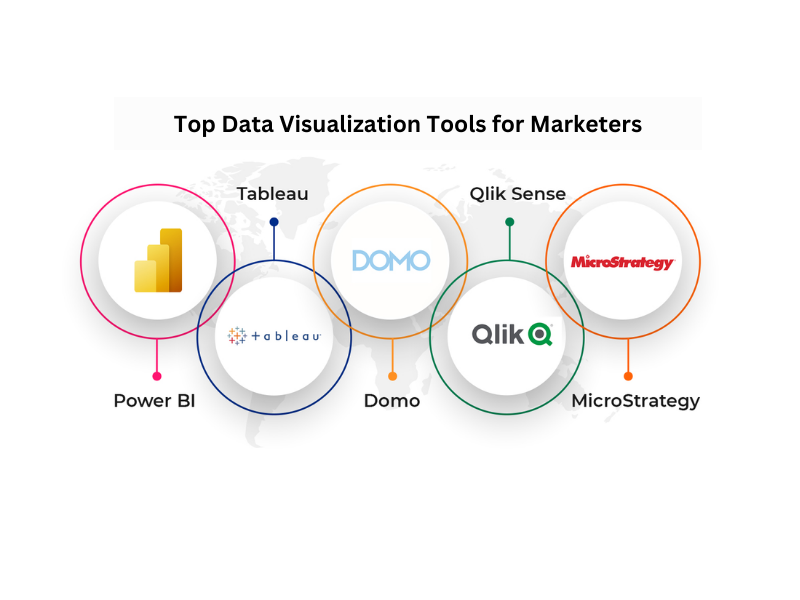In the fast-paced world of digital marketing, success hinges on one crucial element: conversions. Whether you’re running an e-commerce store, managing a blog, or overseeing a complex marketing campaign, understanding how visitors interact with your content is key to driving growth. But here’s the thing—tracking conversions isn’t just about knowing how many people click “buy” or “subscribe.” It’s about uncovering the story behind those clicks, using data to refine your strategies, and ultimately, turning insights into action.
You might be wondering, how exactly do you nail conversion tracking? How do you ensure that every data point you collect contributes to your business growth? That’s where we come in. In this guide, we’ll walk you through proven techniques to measure success and conversion success. From setting up Google Analytics goals to diving into advanced tools like heatmaps and multi-channel attribution, we’ll show you how to turn raw data into actionable insights that drive results.
Ready to dive in? Let’s start by exploring why accurate conversion tracking is the cornerstone of any growth strategy.
Why Accurate Conversion Tracking is Crucial for Growth

Imagine you’re navigating a ship across the ocean without a compass. You might eventually reach your destination, but it would be a lot harder, and you’d likely take some wrong turns along the way. Conversion tracking is that compass for your digital marketing efforts. It provides the direction you need to understand where your customers are coming from, what they’re doing on your site, and most importantly, what’s driving them to take action.
But why is it so crucial? Let’s break it down:
- Understanding Customer Behavior: Conversion tracking allows you to see beyond surface-level metrics like page views or session duration. It helps you dive deep into your customers’ actions, revealing which products they’re interested in, which content engages them, and what obstacles might be preventing them from completing a purchase or sign-up.
- Informed Decision-Making: With accurate conversion tracking, you’re equipped with the data needed to make informed decisions about your marketing strategies. You can pinpoint which channels are driving the most valuable traffic, which campaigns are underperforming, and where you should focus your resources to maximize ROI.
- Optimizing Marketing Spend: One of the biggest advantages of conversion tracking is the ability to optimize your marketing budget. By understanding which efforts yield the highest conversions, you can allocate your budget more effectively, ensuring that you’re not wasting money on strategies that don’t deliver results.
- Driving Business Growth: Ultimately, the goal of conversion tracking is to drive growth. Whether it’s increasing sales, growing your email list, or boosting engagement, accurate tracking provides the insights needed to continuously refine and improve your strategies, leading to sustainable business growth.
To put it simply, without accurate conversion tracking, you’re flying blind. But with the right tools and techniques, you can steer your business toward success with confidence.
Next, we’ll dive into the essential techniques for tracking conversions that every marketer should know.
Essential Techniques for Tracking Conversions
Conversion tracking might seem like a complex puzzle, but with the right techniques, you can piece it together effectively. Let’s explore some of the essential methods that will help you get a clear picture of how well your marketing efforts are converting.

1. Setting Up Google Analytics Goals
Google Analytics is a powerhouse when it comes to tracking conversions. One of the most valuable features it offers is the ability to set up Goals. Goals allow you to track specific actions that align with your business objectives, whether that’s a completed purchase, a form submission, or a download.
How to Set Up Goals:
- Identify Your Goals: Start by deciding what actions on your site are most valuable to track. This could be anything from a thank-you page visit (after a purchase) to a duration goal (time spent on a page).
- Access the Admin Panel: In Google Analytics, navigate to the Admin section. Under the “View” column, select “Goals.”
- Create a New Goal: Click “+ New Goal” and choose a template that fits your objective, or create a custom goal.
- Define Goal Details: Specify the details, such as the goal type (e.g., Destination, Duration, Pages/Screens per session, Event) and the necessary conditions.
- Verify and Save: Before you save the goal, use the verification tool to estimate how the goal would have converted in the past week. This helps ensure your setup is accurate.
By carefully setting up and monitoring these goals, you can gather invaluable data that directly reflects how well your website is meeting your business objectives.
2. Using UTM Parameters for Campaign Tracking
Ever wonder which marketing campaign is truly driving traffic to your site? UTM parameters can answer that. These little snippets of text added to your URLs help track the effectiveness of your campaigns across different channels.
How to Use UTM Parameters:
- Build Your URL: Use Google’s Campaign URL Builder to create a URL with UTM parameters. You’ll fill in details like Campaign Source (e.g., Facebook, Email), Campaign Medium (e.g., CPC, Banner), and Campaign Name.
- Apply Consistently: Consistency is key. Make sure you’re using UTM parameters in every campaign to accurately track which efforts are driving the most conversions.
- Analyze the Data: In Google Analytics, head to the “Acquisition” section and drill down into “Campaigns.” Here, you’ll see how each campaign is performing based on the UTM tags you’ve applied.
By using UTM parameters, you can trace the exact path users take to reach your site, helping you determine which marketing efforts are paying off.
3. Implementing Event Tracking
Not all user actions are as straightforward as clicking a button or making a purchase. Sometimes, you want to track interactions like video plays, file downloads, or clicks on outbound links. This is where event tracking comes in.
Steps to Implement Event Tracking:
- Identify Key Interactions: Decide which user interactions you want to track as events, such as clicking a specific link, downloading a PDF, or playing a video.
- Set Up Event Tracking in Google Analytics: You’ll need to add a small snippet of code to the elements you want to track. This code specifies the event category (e.g., Video), action (e.g., Play), and label (e.g., Promo Video).
- Use Google Tag Manager: To simplify the process, consider using Google Tag Manager to manage and deploy your event tracking tags without modifying your site’s code directly.
Event tracking allows you to capture a richer set of interactions on your site, providing deeper insights into how users engage with your content.
Advanced Tools and Techniques for Improved Conversion Insights
Once you’ve mastered the basics of conversion tracking, it’s time to level up with some advanced tools and techniques. These methods will give you a deeper understanding of your users’ behaviors, helping you optimize your strategies and drive even more growth.

1. Heatmaps and User Behavior Analysis
Heatmaps are like a window into your users’ minds. They show you exactly where people are clicking, how far they’re scrolling, and what elements are grabbing their attention—or being ignored.
How to Use Heatmaps:
- Choose a Heatmap Tool: Tools like Hotjar, Crazy Egg, or Microsoft Clarity are popular for creating heatmaps. These tools track user interactions and visually represent where users click, move, and scroll on your pages.
- Analyze Clicks and Scrolls: Look at areas of high activity to see what’s working well. Conversely, areas with little interaction might need tweaking, like changing the placement of your CTA buttons or improving content visibility.
- Test and Refine: Use insights from your heatmaps to make data-driven changes. For example, if users aren’t scrolling to the bottom of a page, consider moving important content higher up.
Heatmaps give you a clear picture of user engagement, helping you optimize your page layouts and content to boost conversions.
2. Multi-Channel Attribution Models
Understanding which channels are driving conversions isn’t always straightforward. Multi-channel attribution models help by giving credit to all the touchpoints a customer interacts with before converting, not just the last one.
How to Apply Attribution Models:
- Explore Different Models: In Google Analytics, you can compare various attribution models like First Interaction, Last Interaction, Linear, Time Decay, and Position-Based. Each model distributes credit for conversions differently, based on the touchpoints in the customer journey.
- Analyze the Impact: Use the “Model Comparison Tool” in Google Analytics to see how different models attribute conversions. This can reveal insights like whether your paid ads are driving initial interest or if email campaigns are sealing the deal.
- Choose the Right Model: Depending on your business and goals, select an attribution model that aligns with your strategy. For instance, if you’re focused on brand awareness, a First Interaction model might make sense, while a Position-Based model could be better for complex customer journeys.
By using multi-channel attribution, you can get a more accurate picture of which marketing efforts are truly driving conversions and adjust your strategy accordingly.
3. A/B Testing and Conversion Rate Optimization
A/B testing is a powerful technique for fine-tuning your website and marketing campaigns. It involves comparing two versions of a page or an element to see which performs better in terms of conversions.
Steps for Effective A/B Testing:
- Identify What to Test: Start with high-impact elements like headlines, CTA buttons, images, or entire landing pages. These are elements that directly influence user decisions.
- Create Variants: Develop two versions (A and B) of the element you’re testing. For example, you might test a red CTA button against a green one or compare two different headlines.
- Run the Test: Use tools like Google Optimize, Optimizely, or VWO to set up and run your test. The tool will split your traffic between the two versions and track performance.
- Analyze Results and Implement Changes: Once the test concludes, analyze the data to see which version performed better. If there’s a clear winner, implement that version site-wide to boost conversions.
A/B testing allows you to make informed decisions and continuously optimize your site to improve conversion rates.
These advanced tools and techniques are invaluable for gaining deeper insights into user behavior and refining your conversion strategies. Next, we’ll discuss common mistakes in conversion tracking and how to avoid them.

Common Mistakes in Conversion Tracking and How to Avoid Them
Even the best intentions can lead to mistakes, especially when it comes to conversion tracking. These errors can skew your data, leading to misguided decisions that impact your business growth. Let’s explore some common pitfalls and how to steer clear of them.
1. Failing to Define Clear Goals
One of the most fundamental mistakes is not clearly defining what you want to track. Without specific goals, your tracking efforts become scattered, and the data you collect won’t give you actionable insights.
How to Avoid It:
- Set SMART Goals: Ensure that your goals are Specific, Measurable, Achievable, Relevant, and Time-bound. For example, instead of tracking “sales,” track “completed purchases of Product X within Q3.”
- Align Goals with Business Objectives: Make sure every goal directly supports your overall business objectives, whether it’s increasing revenue, growing your email list, or improving user engagement.
2. Overlooking Mobile Conversion Tracking
With the increasing use of mobile devices, neglecting mobile users in your conversion tracking strategy is a significant oversight. Mobile behavior differs from desktop, and failing to track it can lead to an incomplete picture of your customer journey.
How to Avoid It:
- Implement Mobile-Specific Tracking: Use tools like Google Analytics to segment your traffic by device. Ensure that your goals and events are set up to capture mobile interactions, such as tap events, mobile form submissions, or mobile-specific landing pages.
- Optimize for Mobile: Make sure your site is fully optimized for mobile to enhance the user experience and boost mobile conversions.
3. Ignoring Data Integrity Issues
Poor data integrity can lead to misleading conclusions. This often happens when tracking codes are incorrectly implemented, leading to duplicated data, missing conversions, or skewed metrics.
How to Avoid It:
- Regularly Audit Your Tracking Setup: Periodically check that all tracking codes, UTM parameters, and events are functioning correctly. Tools like Google Tag Manager can help you manage and monitor these implementations.
- Filter Out Spam and Bots: Use Google Analytics filters to exclude known bots, spam traffic, and internal IP addresses from your reports, ensuring that your data reflects actual user behavior.
4. Relying Solely on Last-Click Attribution
Many marketers make the mistake of only focusing on the last-click attribution model, which credits the final touchpoint before conversion. This approach overlooks the impact of other channels that contributed earlier in the customer journey.
How to Avoid It:
- Use Multi-Channel Attribution: As discussed earlier, explore different attribution models that give credit to various touchpoints. This will provide a more holistic view of what’s driving conversions.
- Combine with Other Metrics: Look at supporting metrics such as assisted conversions, time to conversion, and user paths to understand the full picture.
5. Not Testing and Iterating
Conversion tracking is not a set-it-and-forget-it task. Failing to test and iterate your strategies can lead to stagnant results, missing out on potential growth opportunities.
How to Avoid It:
- Continuous A/B Testing: Regularly run A/B tests on different elements of your website or campaigns to discover what resonates most with your audience.
- Review and Adjust Goals: As your business evolves, so should your conversion goals. Regularly review your goals and adjust them to reflect changing priorities or new insights.
By avoiding these common mistakes, you can ensure that your conversion tracking is accurate and effective, providing the reliable data you need to drive growth. Next, we’ll discuss how to analyze conversion data to turn these insights into tangible business results.
How to Analyze Conversion Data to Drive Business Growth
Tracking conversions is just the beginning. The real magic happens when you analyze the data to uncover insights that can propel your business forward. In this section, we’ll walk through how to effectively analyze conversion data and use it to make strategic decisions that drive growth.

1. Segmenting Your Data for Deeper Insights
Segmentation is a powerful technique that allows you to break down your conversion data into meaningful groups. This helps you understand which segments of your audience are converting the most, and which ones need more attention.
How to Segment Your Data:
- By Traffic Source: Compare how different traffic sources—like organic search, social media, and paid ads—perform in terms of conversions. This will help you identify where to focus your marketing efforts.
- By Device: Analyze how users on desktop, mobile, and tablet devices convert differently. This can inform your design and user experience strategies.
- By Demographics: Look at age, gender, and location to see if certain demographics are more likely to convert. Tailor your marketing messages to better resonate with these groups.
2. Identifying Conversion Drop-Off Points
One of the most valuable insights you can gain from your data is understanding where potential customers drop off before converting. This helps you pinpoint areas that need improvement.
How to Identify Drop-Off Points:
- Use Funnel Visualization: In Google Analytics, the Funnel Visualization report shows you where users are dropping off at each step of the conversion process. This could be during checkout, after adding items to a cart, or before completing a form.
- Heatmaps and Session Recordings: Tools like Hotjar offer session recordings and heatmaps that show you exactly where users are losing interest or encountering issues on your site.
- User Surveys: Sometimes, it’s best to ask directly. Implement exit surveys or feedback forms to gather insights on why users aren’t completing their conversions.
3. Leveraging Cohort Analysis
Cohort analysis is a technique that groups users based on a shared characteristic (such as the date they first interacted with your site) and tracks their behavior over time. This can reveal patterns in how user behavior evolves.
How to Use Cohort Analysis:
- Identify Behavioral Trends: Look at how different cohorts behave over time. For example, you might discover that users who sign up during a specific campaign have a higher lifetime value than those who sign up through organic search.
- Refine Your Retention Strategies: If you notice that a cohort’s engagement drops off after a certain period, you can introduce retention strategies like email campaigns, loyalty programs, or special offers to keep them engaged.
- Optimize Onboarding Processes: Use cohort analysis to track how different onboarding methods affect user retention and conversions, allowing you to refine your approach for new users.
4. Correlating Conversion Data with Business Metrics
To truly understand the impact of your conversion tracking efforts, it’s important to correlate your data with broader business metrics such as revenue, customer lifetime value (CLV), and return on investment (ROI).
How to Correlate Data:
- Revenue Analysis: Link conversion data to revenue figures to see which products, services, or campaigns are driving the most profit. This can inform pricing strategies and marketing budgets.
- CLV Insights: Track how different conversion paths contribute to customer lifetime value. For instance, users who sign up through a specific lead magnet might have a higher CLV than those who come through other channels.
- ROI Calculation: Compare the costs of your marketing efforts with the revenue generated from conversions to calculate your ROI. This will help you optimize spending and allocate resources more effectively.
5. Continuous Improvement through Data-Driven Strategies
The insights you gain from analyzing conversion data should lead to action. Continuously test, refine, and optimize your strategies based on the data to ensure that your business keeps growing.
Steps for Continuous Improvement:
- Regularly Review Reports: Set up automated reports or schedule regular reviews of your conversion data. This keeps you informed and ready to act on new insights.
- Test New Ideas: Use the data to test new hypotheses. For example, if you see a particular call-to-action is underperforming, try changing the wording, color, or placement, and measure the impact.
- Adjust and Adapt: The digital landscape is constantly changing, and so should your strategies. Stay flexible and willing to adapt based on the latest data and trends.
By thoroughly analyzing your conversion data, you can make informed decisions that lead to tangible business growth. Whether it’s refining your marketing strategies, optimizing your website, or improving customer retention, these insights are the key to staying competitive and successful.
Conclusion
Conversion tracking is more than just a buzzword in the world of digital marketing—it’s the backbone of informed decision-making and sustainable business growth. By mastering the essential techniques, avoiding common pitfalls, and diving deep into advanced tools, you can transform raw data into actionable insights that drive real results.
From setting up Google Analytics goals and using UTM parameters to exploring heatmaps and multi-channel attribution models, each method plays a crucial role in understanding how your audience interacts with your site and what motivates them to convert. Analyzing this data not only helps you optimize your marketing strategies but also empowers you to make smarter, data-driven decisions that can propel your business forward.
Remember, conversion tracking isn’t a one-time task; it’s an ongoing process. As your business evolves, so too should your tracking efforts. Keep testing, keep analyzing, and keep refining your approach to stay ahead of the competition.
Now that you’ve got the tools and techniques to nail conversion tracking, it’s time to put them into action. Start implementing these strategies today and watch as your data-driven decisions pave the way for growth and success.













